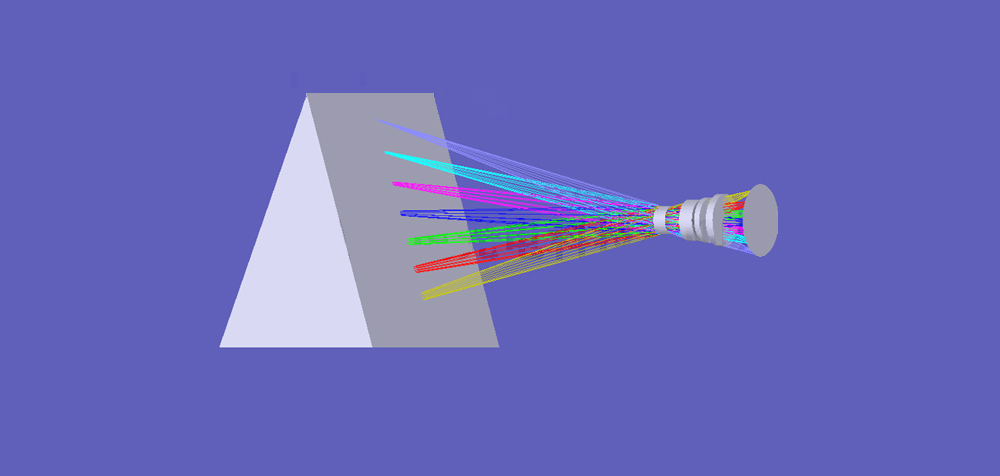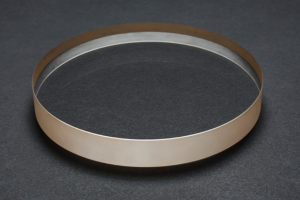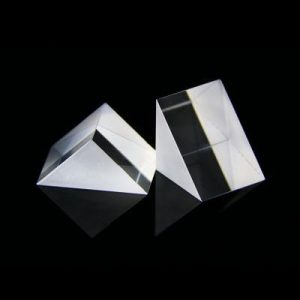1. Related concepts of cold reflection
Cold reflection is a common stray light effect in cooled infrared system. The cooled infrared detector usually works at medium wave (3 ~ 5) μ m) Or long band (8 ~ 12) μ m) , the system components also have certain radiation in this band. If the lens barrel is not sealed, the system will also receive radiation from the external environment, which belongs to stray radiation. Due to the limitation of the cold diaphragm, the detector can not directly see these stray lights, but some stray lights can reach the detector through the reflection of the optical lens to form a cold reflection. Although the reflectivity of the lens is very low (1%) and the stray radiation energy reaching the detector is very small, due to the high contrast between the cold finger working in the low-temperature environment (77K) and the surrounding thermal ring (about 300K), the equivalent temperature difference (NITD) introduced by the cold reflection may be greater than the minimum resolvable temperature difference (MRTD) of the system, thus affecting the imaging quality, which is usually manifested in the superposition of a black spot at the center of the field of view, Seriously affect the imaging quality of optical system [1].
Cold reflection is the self cold image that the infrared detector sees from the dewar and reflects back through the lens surface of the infrared optical system. At present, the commonly used infrared detectors (HgCdTe and InSb) work at the liquid ammonia level temperature of 77K, while the system and shell work at the room temperature of 300K, and the temperature difference between them is about 220K. The infrared detector only responds to the temperature change, that is, the infrared thermal imager only detects and displays the temperature difference between the target and the background. Due to the obvious temperature difference between the low-temperature cavity and other parts of the lens barrel, in addition to receiving the scene radiation for normal imaging, the detector also receives the image of itself and the cold environment of the surrounding low-temperature cavity through the weak reflection of the refractive surface in the infrared optical system, forming a cold image, resulting in an imaging defect – cold reflection. Cold reflection will cause image nonuniformity and make the image effect bad. The strong cold reflection signal will submerge the target signal and seriously affect the detection, recognition, resolution and tracking performance of the system [2].
2. Index for measuring cold reflection effect in optical design
From the perspective of geometric optics, it is considered that the cause of cold reflection is that the detector images itself through lens reflection, and the focusing degree of reflected light in the focal plane determines the size of cold reflection. Because the axisymmetric structure is widely used, the cold reflection of the system is mainly concentrated in the center of the field of view. The NITD in the center of the field of view is of great significance to measure the cold reflection effect of the whole system.
In optical design, the main method to reduce the cold reflection is to reduce the NITD at the center of the field of view. Reference [3] proposed the first-order parameter yNi to measure the defocus degree of the reflected light at the center of the field of view, which has become a commonly used index in cold reflection analysis.
For a single field of view or a multi field system with a small number of fields of view, the correction can basically eliminate the influence of cold reflection. For an optical system with a large number of fields of view or continuous zoom, the correction is difficult to achieve because the cold reflection of the zoom lens group changes with zoom, so it needs to be reduced to below the system MRTD in the optical design.
3. Methods of suppressing cold reflection effect in optical design
Cold image noise may be produced on every refractive surface in infrared optical system. However, the cold image intensity of each side behind the scanning mirror no longer changes with the field of view, which is a filterable DC noise. Therefore, the cold image analysis is limited to each refractive surface in front of the scanning mirror. What affects the image quality of infrared scanning imaging system is only the AC component of cold image noise varying with field of view. There are two methods in optical design: reducing the intensity of cold reflection and hindering the change of cold reflection with the field of view.
(1) Increase the yNi value of cold light line on each refractive surface.
To reduce the cold reflection intensity is to increase the yNi value of the cold light line on each refractive surface, so that when the cold light returns to the detector, it will be defocused and blocked by the cold diaphragm and other apertures. YNi is the product of the projection height y, incident angle I and refractive index n of the paraxial edge light on the surface. It is not difficult to see that as long as the projection height y or incident angle I is close to zero, the yNi value is close to zero, which indicates that the cold image produced by the refractive surface has the greatest influence. Therefore, in the optical design optimization, the incident angle I of light on the optical surface is increased by changing the curvature of the optical surface or the interval is changed to increase the incident height y. Through such adjustment, the yNi value of each optical surface affected by the cold image is greater than a specified value. Of course, according to the specific situation, this specified value should be as large as possible to minimize the temperature drop of the point on the axis caused by the cold image. In this way, the influence of the cold image noise on the scene signal is basically eliminated.
(2) Increase the ratio of I / I-bar.
In addition, the cold reflection is also related to the temperature change in the whole scanning field of view. The way to prevent the cold reflection from changing with the field of view is to increase the ratio of I / I-bar. I is the incidence angle of the paraxial edge light, I-bar is the incidence angle of the paraxial main light, and I / I-bar reflects the change of the cold image noise generated by the surface within the field of view of the system. When this ratio is greater than 1, it indicates that the cold reflection noise generated by this surface basically does not change with the change of field of view. Even if the yNi value of this surface is relatively small, the refracting surface produces strong cold image noise, but because most of it is filterable DC noise signal, its cold image influence is also very small. If I / I-bar is less than 1, the smaller its value is, it indicates that the cold image noise generated by this surface changes with the change of field of view scanning. Most of the cold image noise is an unfilterable AC signal. In this case, in order to eliminate the cold reflection phenomenon, it is necessary to reduce the cold reflection intensity of this surface (i.e. the yNi value is very large), so that its disadvantage of changing with field of view cannot be reflected.
Therefore, in the design, increasing the yNi value reduces the cold reflection level; Reducing the value of I-bar prevents the cold reflection from changing with the field of view scanning. Using these two methods can effectively reduce the cold reflection phenomenon.
End




